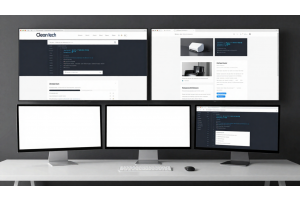Lightning-Fast Magento 2: The Complete Developer's Guide Clients Love

Lightning-Fast Magento 2: The Complete Developer's Guide Clients Love
In today's hyper-competitive e-commerce landscape, speed isn't just a luxury—it's the difference between success and failure. A slow Magento 2 store doesn't just frustrate users; it directly hemorrhages revenue, destroys SEO rankings, and obliterates customer trust. This comprehensive guide will transform you into a Magento 2 performance optimization expert, delivering stores that not only load at lightning speed but also win client hearts, boost their bottom line, and establish you as an indispensable partner in their success.
Table Of Content
- The Business Case: Why Speed Matters More Than Ever
- Foundation: Server Infrastructure That Scales
- Database Optimization: The Heart of Performance
- Code-Level Performance Optimizations
- Template and Layout Optimization
- Advanced Caching Strategies
- Frontend Performance Excellence
- Security and Performance Integration
- Third-Party Integration Optimization
- Monitoring and Performance Measurement
- Advanced Performance Patterns
- Conclusion and Future Considerations
- FAQs
The Business Case: Why Speed Matters More Than Ever
Market Statistics and Consumer Behavior
Before diving into the technical depths, let's establish the stakes with hard numbers that will resonate with your clients. Google's extensive research reveals that as page load time increases from 1 second to 3 seconds, the probability of bounce increases by 32%. Push that to 5 seconds, and you're looking at a 90% increase in bounce rate. For e-commerce sites, the impact is even more severe—every 100ms delay can reduce conversion rates by 1%, and a 2-second delay during transaction processing can result in abandonment rates as high as 87%.
Amazon famously discovered that every 100ms of latency cost them 1% in sales. For a billion-dollar company, that's $10 million annually per 100ms. While your clients may not operate at Amazon's scale, the proportional impact remains consistent. A mid-sized e-commerce store generating $1 million annually could lose $10,000 per year for every 100ms of unnecessary delay.
Beyond direct revenue impact, page speed directly influences SEO performance. Google's Core Web Vitals have made performance a ranking factor, meaning slow stores face a double penalty: reduced organic traffic and lower conversion rates from the traffic they do receive. When you deliver a fast Magento 2 store, you're not just showcasing technical prowess—you're directly impacting your client's competitiveness in their market..
Foundation: Server Infrastructure That Scales
The journey to a lightning-fast Magento 2 store begins with rock-solid infrastructure. Your choice of hosting and server configuration can make or break performance from day one, and no amount of code optimization can compensate for inadequate infrastructure.
Hosting Architecture Deep Dive
Traditional shared hosting is the enemy of Magento 2 performance. The platform's resource requirements—particularly memory usage and CPU processing for complex catalog operations—demand dedicated resources. Cloud hosting platforms like AWS, Google Cloud Platform, or specialized Magento hosting providers like Nexcess or SiteGround's managed Magento hosting offer the scalability and performance tools necessary for modern e-commerce.
For high-traffic stores, consider implementing a multi-server architecture with separate application servers, database servers, and dedicated search servers. This separation allows for independent scaling of different components based on demand patterns. Application servers can be horizontally scaled during peak traffic periods, while database servers can be optimized specifically for MySQL performance without compromising other services.
Container orchestration using Docker and Kubernetes provides ultimate flexibility for scaling Magento 2 deployments. This approach allows for automatic scaling based on real-time demand, efficient resource utilization, and simplified deployments across development, staging, and production environments.
Server Configuration Optimization
Configure your server stack with PHP 8.1 or higher—the performance improvements over PHP 7.4 are substantial, with 10-15% speed increases common in real-world Magento 2 deployments. PHP 8.2 offers even better performance, but ensure all your extensions are compatible before upgrading production environments.
MySQL 8.0 brings significant performance improvements over 5.7, particularly for complex queries common in e-commerce applications. Configure MySQL with appropriate buffer pool sizes—typically 70-80% of available RAM for dedicated database servers. Enable the performance schema for ongoing query optimization, and implement slow query logging to identify bottlenecks proactively.
Elasticsearch configuration requires careful tuning for optimal Magento 2 performance. Allocate at least 2GB of heap space for production environments, implement proper shard strategies for large catalogs, and configure cluster settings for high availability. For stores with extensive catalog attributes and complex search requirements, consider implementing Elasticsearch aliases for zero-downtime reindexing operations.
OPcache configuration dramatically impacts PHP performance. Set opcache.memory_consumption to at least 512MB for production sites, enable opcache.validate_timestamps=0 in production (with proper deployment procedures), and configure opcache.max_accelerated_files appropriately for your codebase size. A typical Magento 2 installation with several extensions requires at least 10,000 max accelerated files.
Advanced Infrastructure Patterns
Implement content delivery networks (CDNs) strategically. Beyond static asset delivery, modern CDNs like Fastly or CloudFlare offer edge computing capabilities that can cache dynamic content and reduce server load. Configure proper cache headers for different content types—product images can cache for months, while category pages might cache for hours.
For global e-commerce operations, consider implementing multi-region deployments with regional read replicas. This architecture reduces latency for international customers while maintaining data consistency through carefully orchestrated replication strategies.
Database replication strategies deserve special attention. Implement read replicas for high-traffic stores, separating read operations from write operations to reduce primary database load. This architecture particularly benefits stores with heavy catalog browsing patterns or complex reporting requirements. Configure connection pooling and query routing to automatically direct read queries to replicas while maintaining write operations on the primary server.
Database Optimization: The Heart of Performance
Database performance often determines overall Magento 2 performance. The platform's Entity-Attribute-Value (EAV) model, while flexible, can create complex queries that strain poorly optimized databases.
MySQL Optimization Strategies
Begin with proper indexing strategies. Magento 2's default indexes cover most common use cases, but custom attributes and complex filtering requirements often need additional indexes. Analyze slow query logs regularly to identify missing indexes, but be cautious—over-indexing can slow write operations.
Implement database partitioning for large datasets. Category product relationships, customer orders, and log tables benefit from partitioning strategies that improve query performance while simplifying maintenance operations. Range partitioning by date works well for order and log tables, while hash partitioning can improve performance for large customer datasets.
Query optimization extends beyond indexing. Use EXPLAIN statements to analyze query execution plans, identify table scans, and optimize JOIN operations. Magento 2's collection classes sometimes generate suboptimal queries—profiling tools like Blackfire can identify these bottlenecks and guide custom optimizations.
Configure MySQL's query cache appropriately, though be aware that high-write environments may see limited benefits. Instead, focus on optimizing individual queries and implementing application-level caching strategies that complement database performance.
Advanced Database Techniques
For enterprise-scale deployments, consider implementing database connection pooling using tools like ProxySQL. This approach manages database connections more efficiently, reducing connection overhead and enabling advanced routing strategies for read/write splitting.
Implement proper backup and recovery strategies that don't impact performance. Use MySQL's binary logging for point-in-time recovery, but configure log rotation to prevent disk space issues. For large databases, consider using tools like Percona XtraBackup for hot backups that don't lock tables during backup operations.
Database maintenance automation prevents performance degradation over time. Implement scheduled optimization of tables, particularly for frequently updated tables like cataloginventory_stock_item and sales_order. Configure automatic statistics updates to ensure the query optimizer has accurate information for execution plan generation.
Code-Level Performance Optimizations
Efficient code forms the foundation of fast Magento 2 stores. While the platform provides numerous performance optimization features, custom code can either leverage these effectively or completely undermine them.
Advanced Module Development Practices
When developing custom modules, architectural decisions have lasting performance implications. Use Magento 2's service contracts consistently—they provide built-in caching and optimization features that direct object manipulation bypasses. Implement proper dependency injection instead of using the object manager directly, as this enables Magento's compilation optimizations.
Design custom modules with caching in mind from the beginning. Implement cache tags appropriately—overly broad tags reduce cache effectiveness, while overly specific tags create cache invalidation complexity. Use Magento's cache context system to ensure cached data remains consistent across different customer segments and store views.
For data-intensive operations, implement proper collection filtering and pagination. Avoid loading entire collections into memory—use collection methods like setPageSize() and setCurPage() even for internal operations. When iterating over large datasets, use walk() methods that process results in batches rather than loading everything simultaneously.
Repository pattern implementation requires careful attention to performance. While repositories provide clean APIs, they can introduce N+1 query problems if not implemented carefully. Use batch loading techniques and implement proper joins in repository methods to minimize database queries.Repository pattern implementation requires careful attention to performance. While repositories provide clean APIs, they can introduce N+1 query problems if not implemented carefully. Use batch loading techniques and implement proper joins in repository methods to minimize database queries.
Frontend Performance Architecture
Magento 2's frontend architecture offers numerous optimization opportunities that many developers overlook. RequireJS configuration significantly impacts JavaScript performance—optimize bundling strategies based on actual page usage patterns rather than using default configurations.
Implement proper theme inheritance to minimize code duplication while maintaining customization flexibility. Override only necessary templates and layouts, leveraging parent theme assets whenever possible. This approach reduces the total CSS and JavaScript footprint while simplifying maintenance.
Critical rendering path optimization requires understanding how Magento 2 renders pages. Identify above-the-fold content for different page types and implement inline critical CSS for immediate rendering. Use resource hints like dns-prefetch and preconnect for external resources, and implement preload directives for critical assets.
Advanced JavaScript optimization goes beyond minification. Implement proper event delegation to reduce memory usage, use modern JavaScript features where appropriate (with proper transpilation for older browsers), and leverage service workers for sophisticated caching strategies.
Template and Layout Optimization
Magento 2's layout system provides powerful customization capabilities, but improper use can severely impact performance. Minimize layout XML complexity—each layout instruction requires processing time during page generation. Use layout handles efficiently, avoiding overly granular handles that fragment caching effectiveness.
Template optimization focuses on reducing computational complexity during rendering. Avoid complex logic in templates—move business logic to view models or helper classes. Implement proper data preparation in PHP rather than performing calculations in templates, as PHP compilation is more efficient than repeated template processing.
Block caching strategies deserve special attention. Implement ESI (Edge Side Includes) for complex pages with mixed caching requirements. This approach allows different page sections to cache independently, maximizing cache effectiveness while maintaining dynamic content where necessary.
Tip
To enhance your eCommerce store’s performance with Magento, focus on optimizing site speed by utilizing Emmo themes and extensions. These tools are designed for efficiency, ensuring your website loads quickly and provides a smooth user experience. Start leveraging Emmo's powerful solutions today to boost customer satisfaction and drive sales!
Advanced Caching Strategies
Caching represents the most impactful performance optimization for most Magento 2 stores. However, effective caching requires understanding the different caching layers and implementing strategies that work together cohesively.
Full Page Cache Mastery
Magento 2's Full Page Cache (FPC) provides the foundation for fast page loads, but default configurations often leave performance on the table. Implement Varnish for production environments—it consistently outperforms built-in caching for high-traffic scenarios by 3-5x.
Varnish configuration requires careful tuning for Magento 2's specific requirements. Configure proper grace periods to serve stale content during backend issues, implement health checks for backend servers, and configure appropriate cache sizing based on your catalog size and traffic patterns. A typical mid-sized store requires 2-4GB of Varnish cache memory for optimal performance.
Custom cache policies for different page types can dramatically improve cache effectiveness. Product pages typically cache for hours or days depending on inventory changes, while category pages might cache for shorter periods due to promotional content. Implement dynamic TTL strategies that adjust cache duration based on content volatility and business requirements.
Cache warming strategies ensure optimal performance during traffic spikes and after cache purges. Implement automated cache warming that crawls critical pages after deployments or cache invalidation. Consider implementing predictive cache warming based on traffic patterns—warm frequently accessed pages during low-traffic periods to ensure optimal performance during peak hours.
Redis Implementation and Optimization
Redis configuration significantly impacts both caching and session performance. Implement separate Redis instances for different functions—session storage, cache storage, and FPC each have different optimization requirements. This separation prevents resource contention and allows independent scaling.
Configure Redis persistence appropriately for your requirements. Cache data typically doesn't require persistence, while session data needs some durability. Use appropriate persistence strategies (RDB snapshots vs AOF logging) based on data importance and performance requirements.
Redis memory optimization prevents performance degradation and out-of-memory conditions. Configure appropriate maxmemory policies—typically allkeys-lru for cache instances and noeviction for session storage. Monitor memory usage patterns and implement alerts for approaching memory limits.
For high-availability deployments, implement Redis Sentinel or Redis Cluster depending on your scaling requirements. Sentinel provides automatic failover for master-replica setups, while Redis Cluster enables horizontal scaling across multiple nodes.
Application-Level Caching Strategies
Beyond system-level caching, implement strategic application caching for expensive operations. Cache complex calculations, external API responses, and computed values that don't change frequently. Use appropriate cache tags to enable selective invalidation when related data changes.
Implement cache hierarchies for complex data relationships. For example, cache individual product data with specific tags, category-level aggregations with broader tags, and site-wide calculations with global tags. This hierarchy enables efficient cache invalidation while maximizing cache reuse.
For stores with complex pricing or inventory rules, implement cache strategies that account for customer segments and dynamic pricing. Use cache contexts appropriately to ensure customers see correct prices and availability while maximizing cache effectiveness across similar customer segments.
Frontend Performance Excellenceg
Frontend optimization often provides the most visible performance improvements to end users. Modern web performance focuses on perceived performance as much as actual load times.
Advanced Image Optimization
Image optimization extends far beyond simple compression. Implement responsive images with proper srcset attributes to serve appropriately sized images for different devices and screen densities. A mobile user shouldn't download desktop-sized images, and high-DPI displays should receive optimized high-resolution variants.
WebP format adoption provides substantial file size reductions with better quality than JPEG. Implement WebP with appropriate fallbacks for older browsers using the picture element or server-side user agent detection. Consider AVIF format for cutting-edge browsers—it provides even better compression than WebP.
Lazy loading implementation should be sophisticated and user-experience focused. Implement intersection observer-based lazy loading that begins loading images slightly before they enter the viewport. This approach maintains smooth scrolling while minimizing unnecessary image loads for users who don't scroll to see all content.
Progressive image loading enhances perceived performance by showing low-quality placeholders immediately while full-quality images load. Implement LQIP (Low Quality Image Placeholders) or SVG-based placeholders that provide visual continuity during image loading.
CSS and JavaScript Optimization
CSS optimization goes beyond minification. Implement critical CSS extraction for above-the-fold content, ensuring immediate rendering without waiting for full stylesheet downloads. Use CSS containment properties to optimize rendering performance for complex layouts.
JavaScript bundling strategies should balance request reduction with cache effectiveness. Implement intelligent bundling that groups commonly used functionality while creating separate bundles for page-specific features. This approach minimizes initial bundle size while maintaining cache effectiveness across different page types.
Modern JavaScript features can improve performance when used appropriately. Implement ES6+ features where supported, use async/await for cleaner asynchronous code, and leverage modern APIs like Intersection Observer for more efficient scroll-based interactions.
Tree-shaking and dead code elimination reduce JavaScript bundle sizes significantly. Configure build processes to eliminate unused code, remove development-only features from production builds, and implement proper module splitting for code-splitting strategies.
Advanced Frontend Techniques
Service worker implementation enables sophisticated caching strategies and offline functionality. Implement service workers that cache critical assets, provide offline fallbacks for key pages, and enable background synchronization for form submissions.
Web font optimization prevents layout shifts and improves rendering performance. Use font-display: swap for better perceived performance, implement font preloading for critical fonts, and consider variable fonts to reduce the number of font files required.
Third-party script optimization prevents external dependencies from degrading performance. Implement third-party scripts asynchronously, use facade patterns for heavy widgets like social media embeds, and consider self-hosting critical third-party assets to improve reliability and performance.
Security and Performance Integration
Security and performance often seem at odds, but proper implementation can achieve both without compromise. Understanding how security measures impact performance allows for optimized implementations that protect stores without sacrificing speed.
SSL/TLS Optimization
Modern SSL/TLS configuration significantly impacts performance. Implement HTTP/2 to reduce connection overhead, configure proper cipher suites for optimal encryption performance, and use TLS 1.3 where supported for reduced handshake times.
Certificate management affects both security and performance. Use certificates with proper Subject Alternative Names (SAN) to cover all necessary domains, implement OCSP stapling to reduce certificate validation overhead, and configure appropriate certificate chains for optimal browser compatibility.
HSTS (HTTP Strict Transport Security) configuration improves both security and performance by eliminating HTTP-to-HTTPS redirects for return visitors. Configure appropriate max-age values and consider HSTS preload listing for maximum effectiveness.
Web Application Firewall Integration
WAF implementation should complement rather than hinder performance optimization efforts. Choose WAF solutions that offer edge caching capabilities, configure rule sets that minimize false positives requiring manual review, and implement proper bypass rules for legitimate automated traffic like search engine crawlers.
Rate limiting strategies protect against attacks while maintaining performance for legitimate users. Implement intelligent rate limiting that considers user behavior patterns, provides different limits for different user types, and uses distributed rate limiting for multi-server deployments.
DDoS protection integration should include performance considerations. Choose solutions that provide attack mitigation without adding significant latency during normal operations, configure proper challenge mechanisms that don't impede legitimate users, and implement monitoring that distinguishes between attacks and legitimate traffic spikes.
Third-Party Integration Optimization
Modern e-commerce stores rely heavily on third-party integrations for functionality like payment processing, shipping, analytics, and marketing automation. These integrations can significantly impact performance if not implemented thoughtfully.
Implement robust caching strategies for third-party API responses. Cache data that doesn't change frequently—product information from suppliers, shipping rates for common destinations, and tax calculations for standard scenarios. Use appropriate cache TTLs that balance data freshness with performance requirements.
Asynchronous processing prevents third-party service delays from impacting user experience. Use Magento's message queue system for non-critical operations like sending emails, updating external systems, and processing analytics data. This approach ensures user-facing operations remain fast even when external services experience delays.
Error handling and fallback strategies maintain performance during third-party service outages. Implement circuit breaker patterns that temporarily disable failing services, provide graceful degradation when external services are unavailable, and cache fallback data for critical operations.
Connection pooling and request optimization reduce overhead for frequent API interactions. Implement persistent connections for services that support them, batch API requests when possible, and use compression for large data transfers.
Extension Performance Audit
Regular extension audits identify performance bottlenecks before they impact user experience. Use profiling tools to measure extension impact, monitor database queries generated by extensions, and track memory usage patterns for resource-intensive modules.
Extension replacement strategies can dramatically improve performance. Replace heavy extensions with lighter alternatives, consolidate functionality from multiple extensions into single solutions, and consider custom development for critical functionality that doesn't require third-party extensions.
Version management affects both security and performance. Keep extensions updated for security patches and performance improvements, test updates in staging environments to prevent performance regressions, and maintain rollback procedures for problematic updates.
Application Performance Monitoring
Implement APM tools such as New Relic, Blackfire, or Elastic APM to gain deep insights into application performance. Monitor response times, database query efficiency, cache hit ratios, and error rates to identify bottlenecks.
Track custom business-specific metrics like cart abandonment timing, checkout success rates, and search performance to connect technical data with business outcomes.
Use Real User Monitoring (RUM) to understand actual user experiences across devices, browsers, and network conditions. Monitor Core Web Vitals, identify segment-specific performance issues, and analyze geographic performance patterns.
Synthetic monitoring enables proactive issue detection. Set up scripted tests for critical user journeys across different locations, and receive alerts on performance degradations before they affect users.
Performance Analytics and Reporting
Create dashboards that turn technical metrics into actionable business insights. Highlight how page speed influences conversion rates, measure the impact of optimizations, and analyze long-term trends to improve strategy.
Automate reporting to keep stakeholders informed. Deliver regular performance summaries that show progress, flag new issues, and offer clear optimization recommendations.
Benchmark performance against competitors using tools like Google PageSpeed Insights, GTmetrix, and WebPageTest. Establish baselines and track improvements over time to maintain competitive edge.
Client Communication and Value Demonstration
Effective communication bridges the gap between technical work and business value. Help clients understand how optimization translates to real-world results.
Business Impact Translation
Showcase the business value of performance improvements. Link faster load times to higher conversions, explain how better Core Web Vitals improve SEO, and quantify revenue impact through data.
Create case studies with before-and-after performance metrics, ROI calculations, and success stories that demonstrate measurable value.
Use competitive analysis to benchmark client performance. Highlight wins, surface improvement areas, and position optimization as a strategic advantage.
Ongoing Partnership Development
Position yourself as a long-term performance partner. Provide roadmaps, conduct recurring audits, and stay updated on emerging optimization techniques.
Educate clients through blogs, whitepapers, and presentations that explain the complexities of performance tuning and establish your credibility.
Offer proactive recommendations based on ongoing monitoring. Present clear, data-backed suggestions tied to business goals and expected outcomes.
Performance Optimization Comparison Table
| Optimization Technique | Implementation Difficulty | Performance Impact | Client Visibility | Implementation Time | Cost | Maintenance Required |
|---|---|---|---|---|---|---|
| Cloud Hosting Migration | Medium | High | Low | 2-4 weeks | $200-2000/month | Low |
| PHP 8.1+ Upgrade | Low | Medium-High | Low | 1-2 days | $0-500 | Low |
| Redis Implementation | Medium | High | Low | 3-5 days | $50-200/month | Medium |
| MySQL 8.0 Upgrade | Medium | Medium | Low | 1-2 weeks | $0-300 | Low |
| Elasticsearch Optimization | High | Medium-High | Medium | 1-2 weeks | $100-500/month | Medium |
| Varnish Configuration | High | Very High | Medium-High | 1-2 weeks | $0-200/month | Medium |
| Full Page Cache Optimization | Medium | High | High | 3-7 days | $0 | Low |
| Redis Cache Tuning | Medium | Medium-High | Low | 2-4 days | $0 | Low |
| Application Cache Implementation | High | Medium | Low | 1-3 weeks | $0 | Medium |
| CDN Implementation | Low-Medium | High | High | 1-3 days | $50-500/month | Low |
| Query Optimization | High | Medium-High | Low | 1-4 weeks | $0 | High |
| Index Optimization | Medium | Medium | Low | 3-7 days | $0 | Medium |
| Database Partitioning | Very High | High | Low | 2-6 weeks | $0 | High |
| Read Replica Setup | High | Medium-High | Low | 1-2 weeks | $100-1000/month | Medium |
| Connection Pooling | High | Medium | Low | 1 week | $0-200/month | Low |
| Image Optimization (WebP/AVIF) | Low-Medium | Medium-High | High | 2-5 days | $0-100/month | Low |
| Critical CSS Implementation | Medium-High | Medium | High | 1-2 weeks | $0 | Medium |
| JavaScript Bundling Optimization | Medium | Medium | Medium | 3-7 days | $0 | Low |
| Lazy Loading Implementation | Low | Medium | High | 1-3 days | $0 | Low |
| Service Worker Implementation | High | Medium-High | Medium | 1-3 weeks | $0 | Medium |
| Custom Module Optimization | High | Variable | Low | 1-8 weeks | $0 | High |
| Template Optimization | Medium | Medium | Low | 1-2 weeks | $0 | Medium |
| Collection Query Optimization | High | Medium-High | Low | 1-3 weeks | $0 | Medium |
| Repository Pattern Implementation | High | Medium | Low | 2-4 weeks | $0 | Medium |
| Event Observer Optimization | Medium | Low-Medium | Low | 3-7 days | $0 | Low |
| Extension Performance Audit | Medium | Variable | Medium | 1-2 weeks | $0 | High |
| API Response Caching | Medium | Medium | Low | 3-7 days | $0 | Low |
| Asynchronous Processing Setup | High | Medium-High | Low | 1-2 weeks | $0 | Medium |
| Third-Party Script Optimization | Medium | Medium | Medium | 1 week | $0 | Low |
| Payment Gateway Optimization | Medium-High | Medium | High | 1-2 weeks | $0-200/month | Low |
| APM Tool Implementation | Low-Medium | N/A | High | 1-3 days | $100-500/month | Low |
| Real User Monitoring Setup | Low | N/A | High | 1-2 days | $50-300/month | Low |
| Performance Dashboard Creation | Medium | N/A | Very High | 1 week | $0-200/month | Medium |
| Automated Performance Testing | High | N/A | Medium | 1-2 weeks | $0-100/month | Medium |
| Competitive Benchmarking | Low | N/A | High | 1 day | $0 | Low |
Implementation Roadmap and Prioritization
Extension Performance Audit
Regular extension audits identify performance bottlenecks before they impact user experience. Use profiling tools to measure extension impact, monitor database queries generated by extensions, and track memory usage patterns for resource-intensive modules.
Extension replacement strategies can dramatically improve performance. Replace heavy extensions with lighter alternatives, consolidate functionality from multiple extensions into single solutions, and consider custom development for critical functionality that doesn't require third-party extensions.
Version management affects both security and performance. Keep extensions updated for security patches and performance improvements, test updates in staging environments to prevent performance regressions, and maintain rollback procedures for problematic updates.
Phase 1: Foundation (Weeks 1–4)
Start with infrastructure optimizations that deliver quick, measurable results. Upgrade to PHP 8.1+, implement basic Redis caching, and configure Full Page Cache properly. These steps can improve performance by 20–40% with minimal risk.
Establish baseline performance using tools like Google PageSpeed Insights, GTmetrix, and WebPageTest. Document key metrics for pages like the homepage, category, product, and checkout. This sets a clear benchmark for optimization impact.
Phase 2: Caching Excellence (Weeks 5–8)
Implement advanced caching strategies such as Varnish for high-traffic sites. Fine-tune cache policies based on content type, enable cache warming, and integrate a CDN for global speed improvements.
Focus on Full Page Cache with proper ESI implementation for dynamic blocks. Expect an additional 30–60% boost in performance for cached pages.
Phase 3: Database and Backend (Weeks 9–16)
Optimize the database with query analysis, index tuning, and connection pooling. For high-traffic stores, add read replicas and consider partitioning to scale efficiently.
Review custom code for performance: optimize collections, refactor inefficient modules, and apply repository patterns to reduce load and speed up backend processes.
Phase 4: Frontend Excellence (Weeks 17–24)
Apply advanced frontend techniques like critical CSS, JavaScript bundling, and image optimization. Add service workers to enhance repeat visits and enable offline capabilities.
Focus on improving Core Web Vitals: Largest Contentful Paint (LCP), First Input Delay (FID), and Cumulative Layout Shift (CLS).
Phase 5: Integration and Monitoring (Weeks 25–32)
Audit third-party integrations to reduce unnecessary overhead. Implement full-stack monitoring tools to track performance over time.
Establish an ongoing performance monitoring process to ensure continued optimization and long-term speed improvements.
Advanced Performance Patterns
Extension Performance Audit
Regular extension audits identify performance bottlenecks before they impact user experience. Use profiling tools to measure extension impact, monitor database queries generated by extensions, and track memory usage patterns for resource-intensive modules.
Extension replacement strategies can dramatically improve performance. Replace heavy extensions with lighter alternatives, consolidate functionality from multiple extensions into single solutions, and consider custom development for critical functionality that doesn't require third-party extensions.
Version management affects both security and performance. Keep extensions updated for security patches and performance improvements, test updates in staging environments to prevent performance regressions, and maintain rollback procedures for problematic updates.
Microservice Architecture Considerations
For enterprise-scale Magento 2 deployments, consider using microservice patterns to separate high-load functions from the core application. Offload search operations to Elasticsearch clusters, isolate inventory management services, and integrate dedicated recommendation engines for personalized experiences.
Implement an API Gateway to centralize and manage communication across services. Use it to apply rate limiting, caching, authentication, request/response transformations, and overall microservice orchestration. Caching frequently accessed data at the gateway level improves performance and reduces backend load.
Edge Computing Integration
Use edge computing features provided by modern CDNs to bring processing closer to end users. Implement edge workers for lightweight tasks such as currency conversion, basic personalization, and content transformation. This reduces latency and server load.
Adopt edge caching strategies for dynamic content by incorporating user attributes into cache keys. Execute A/B tests and cache API responses at edge nodes to optimize delivery speed globally while maintaining a personalized experience.
Progressive Web App (PWA) Implementation
PWA technology brings app-like speed and responsiveness to Magento stores. Implement service workers for advanced caching, use app shell architecture for rapid UI loading, and support offline functionality for key interactions.
Design caching strategies that align with server-side logic. Use cache-first for static resources, network-first for dynamic content, and background sync for offline user actions to ensure consistency and performance.
Performance Impact vs Business ROI Analysis
Linking technical improvements to business outcomes is key to client buy-in. Evaluate the ROI of each performance optimization by assessing expected gains in speed, scalability, and customer experience against cost and complexity.
This approach helps prioritize high-impact improvements, align technical decisions with business goals, and clearly communicate value to stakeholders.
| Optimization | Category | Page Speed Improvement | Conversion Rate Impact | SEO Ranking Impact | User Experience Score | Implementation ROI | Typical Payback Period |
|---|---|---|---|---|---|---|---|
| Hosting Upgrade (Shared to Cloud) | Basic Infrastructure | 40-60% | +15-25% | High | +30% | 300-500% | 2-4 months |
| PHP 7.4 to 8.1+ Upgrade | Basic Infrastructure | 15-25% | +8-12% | Medium | +15% | 800-1200% | 1-2 months |
| Basic Redis Implementation | Basic Infrastructure | 20-35% | +10-18% | Medium | +20% | 400-600% | 2-3 months |
| Varnish + Full Page Cache | Advanced Caching | 60-80% | +25-40% | Very High | +45% | 200-400% | 3-6 months |
| CDN Implementation | Advanced Caching | 30-50% | +12-20% | High | +25% | 250-400% | 2-4 months |
| Redis Optimization | Advanced Caching | 10-20% | +5-10% | Low-Medium | +10% | 200-300% | 3-5 months |
| Query Optimization | Database Optimization | 25-45% | +12-22% | Medium | +20% | 150-300% | 4-8 months |
| Index Optimization | Database Optimization | 15-30% | +8-15% | Medium | +15% | 300-500% | 2-4 months |
| Read Replicas | Database Optimization | 20-40% | +10-18% | Medium | +18% | 100-200% | 6-12 months |
| Image Optimization (WebP) | Frontend Optimization | 25-40% | +12-18% | High | +30% | 400-700% | 1-3 months |
| Critical CSS | Frontend Optimization | 20-35% | +10-16% | High | +25% | 300-500% | 2-4 months |
| JavaScript Optimization | Frontend Optimization | 15-25% | +8-12% | Medium | +20% | 250-400% | 3-5 months |
| Lazy Loading | Frontend Optimization | 10-20% | +5-10% | Medium | +15% | 500-800% | 1-2 months |
| Custom Module Optimization | Code Optimization | 20-50% | +10-25% | Medium | +20% | 100-300% | 6-18 months |
| Template Optimization | Code Optimization | 15-30% | +8-15% | Low-Medium | +15% | 200-400% | 4-8 months |
| Collection Query Fixes | Code Optimization | 25-45% | +12-20% | Medium | +18% | 250-450% | 3-6 months |
| Extension Audit/Cleanup | Third-Party Integration | 30-60% | +15-30% | Medium-High | +25% | 300-600% | 2-6 months |
| API Caching | Third-Party Integration | 15-25% | +8-12% | Low | +10% | 200-350% | 4-6 months |
| Async Processing | Third-Party Integration | 20-35% | +10-18% | Medium | +20% | 150-300% | — |
Key Metrics Explained:
- Page Speed Improvement: Reduction in average page load time
- Conversion Rate Impact: Increase in sales conversion rates
- SEO Ranking Impact: Expected improvement in search rankings
- User Experience Score: Overall improvement in user satisfaction metrics
- Implementation ROI: Return on investment within first year
- Payback Period: Time to recover optimization investment costs
Reading the Data: This table helps prioritize optimization efforts based on both technical impact and business value. High-ROI, short-payback optimizations like hosting upgrades and PHP updates should be implemented first, while longer-term optimizations like custom code improvements provide sustained competitive advantages.
Conclusion and Future Considerations
Building lightning-fast Magento 2 stores requires a comprehensive approach that addresses every aspect of the application stack, from infrastructure and database optimization to frontend performance and user experience. The strategies outlined in this guide provide a systematic approach to achieving exceptional performance while maintaining the flexibility and functionality that makes Magento 2 a powerful e-commerce platform.
The key to long-term success lies in understanding that performance optimization is not a one-time project but an ongoing process that requires continuous monitoring, measurement, and refinement. As your clients' businesses grow and evolve, their performance requirements will change, and new optimization opportunities will emerge.
Success in Magento 2 performance optimization requires balancing technical excellence with business understanding. The most impactful optimizations are those that not only improve technical metrics but also drive measurable business outcomes. When clients see their conversion rates improve, their search rankings increase, and their customers provide positive feedback about site speed, they understand the value of performance optimization and become advocates for continued investment in technical excellence.
The e-commerce landscape continues to evolve rapidly, with new performance standards, browser capabilities, and user expectations emerging regularly. Stay current with industry developments, participate in the Magento community, and continuously expand your optimization toolkit. The investment in performance expertise pays dividends not only in client satisfaction but also in your professional development and market differentiation.
FAQs
What is “Lightning-Fast Magento 2”?
It’s a performance-focused approach to Magento 2 development that emphasizes server tuning, caching, frontend speed, and code efficiency for dramatically faster load times.
Why does Magento 2 performance matter to clients?
Slow sites hurt user experience, SEO rankings, and conversions. A fast Magento 2 store keeps customers engaged and drives more revenue.
What are the core areas to optimize in Magento 2?
Key areas include hosting infrastructure, caching (Full Page Cache, Varnish), database queries, JavaScript, images, and 3rd-party extensions.
Does upgrading PHP improve speed?
Yes. Moving from PHP 7.4 to 8.1+ can bring 15–25% faster performance due to engine-level improvements and better memory handling.
What is Full Page Caching and why use it?
FPC stores fully rendered HTML in cache to serve instantly instead of processing via PHP. It’s essential for reducing TTFB and boosting scalability.
How does Redis help Magento 2?
Redis stores session and cache data in memory, making data retrieval significantly faster than file-based storage, especially for larger catalogs.
What’s the impact of CDN integration?
CDNs reduce latency by serving static content (images, JS, CSS) from edge servers close to users, improving site speed globally.
What is Critical CSS in Magento 2?
Critical CSS is the minimal set of styles needed to render above-the-fold content quickly. It reduces render-blocking and improves perceived speed.
Should I use WebP images in Magento?
Yes. WebP format offers smaller file sizes with comparable quality, which helps reduce load times and boosts Core Web Vitals scores.
How do I test my store’s speed?
Use tools like Google PageSpeed Insights, GTmetrix, or WebPageTest to measure load times, bottlenecks, and performance scores.
Can slow extensions hurt Magento performance?
Absolutely. Poorly coded or bloated extensions can slow down pages and conflict with caches. Regular audits are critical.
Is Varnish still worth it in 2025?
Yes. Varnish remains a leading edge cache solution, delivering up to 80% faster responses for cached pages in high-traffic Magento stores.
Does MySQL tuning really make a difference?
Yes. Index optimization, query tuning, and using read replicas can significantly reduce load on your primary database and speed up page rendering.
How do I lazy load images in Magento 2?
You can implement native `loading="lazy"` attributes or use JavaScript libraries to defer off-screen images until they enter the viewport.
Can async processing improve Magento speed?
Yes. Offloading tasks like email sending or API calls to queues improves frontend response time and keeps checkout fast.
How important is server location?
Very. Hosting close to your primary audience improves response times. Pairing with a CDN further helps deliver content efficiently.
What is template optimization?
It involves cleaning up unused or inefficient `.phtml` files, removing redundant code, and ensuring layout XML is lean and fast-loading.
Should I optimize JS bundling?
Yes. Optimize RequireJS configs or use Hyvä or custom solutions to reduce JS payloads, improving TTI (Time to Interactive).
Can Magento 2 be fast on shared hosting?
Unlikely. Magento 2 needs resources. For a fast experience, move to VPS, cloud, or dedicated hosting with proper stack tuning.
Is performance a one-time setup?
No. It’s continuous. Code updates, catalog growth, and traffic changes require regular performance audits and tuning.









